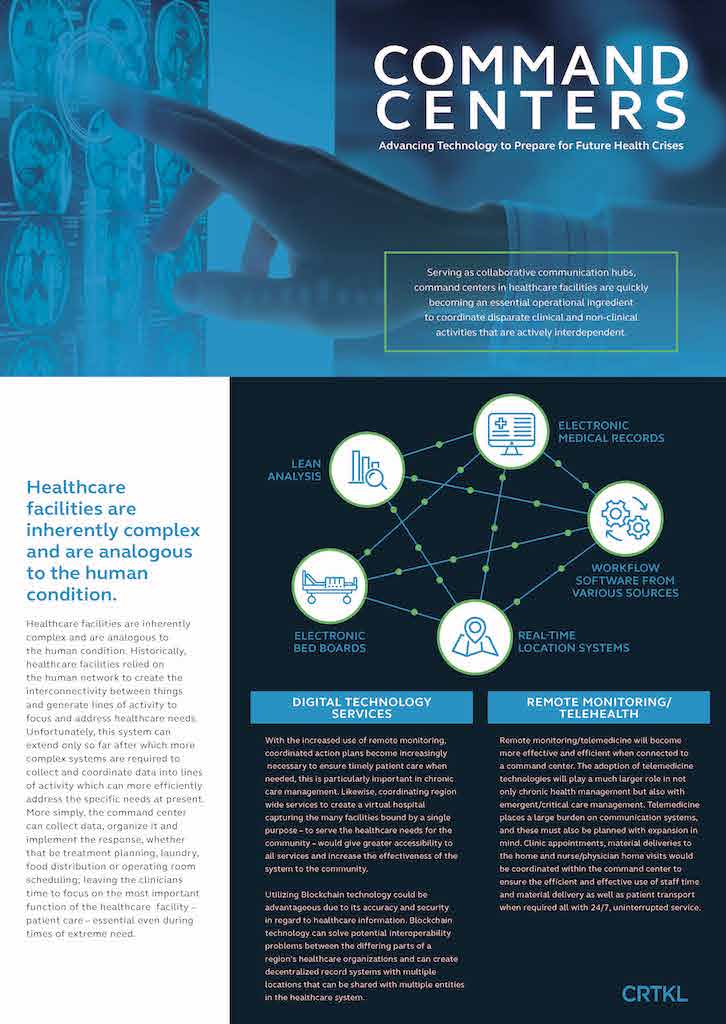Healthcare / Digital health, data and privacy
European Healthcare Design 2022
Command centres: Advancing technology to prepare for future health crises
By SALUS User Experience Team | 04 Oct 2022 | 0
The lessons learned from Covid-19 can be applied to the future of healthcare facilities. In this poster, attendees will learn about the importance of interconnectivity within command centres and how they can help facilitate telemedicine to streamline efficiencies within facilities.
Abstract
Serving as collaborative communication hubs, command centres in healthcare facilities are quickly becoming an essential operational ingredient to co-ordinate disparate clinical and non-clinical activities that are actively interdependent. This co-ordination, enhanced by artificial intelligence, occurs within the data nexus, a place for information collaboration and operational decision support to connect those interdependencies seamlessly. Telemedicine will become more effective when connected to a command centre. The adoption of telemedicine technologies will play a much larger role in chronic health management and emergency and critical care management.
However, telemedicine places a significant burden on communication systems. This function is best integrated within the command centre since it is likely that these patients will have ongoing care plans that need to be included and co-ordinated within the healthcare system. Clinic appointments, material deliveries to the home, and nurse home visits will be co-ordinated within the command centre to ensure efficient use of staff time. Increased ability to treat patients competitively is not essential because it will fail the patient if the equipment isn’t performing.
Command centres are the beating heart of an organisation as it collects all the data, sorts it, and puts it together to help the reader or someone needing the information. It can reconcile with all the equipment coming in and organise it as required.
Organisations involved

